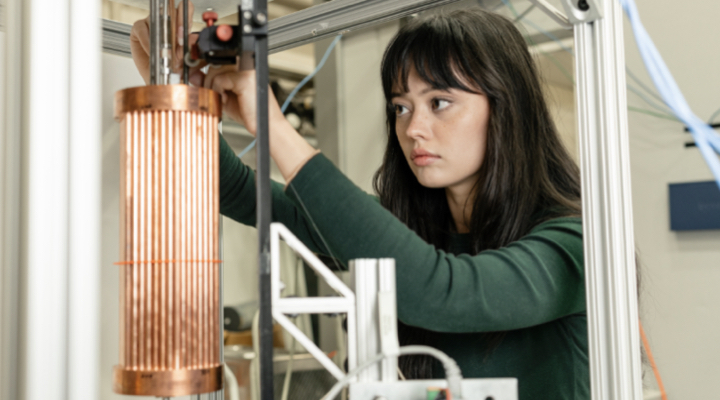Submitted by Matthew Bothwell on Fri, 19/01/2024 - 11:26
Physics breakthroughs don’t always require city-sized particle colliders or giant radio telescope arrays. The Gordon and Betty Moore Foundation, the Simons Foundation, the Alfred P. Sloan Foundation and the John Templeton Foundation have partnered to fund 11 innovative “tabletop” experiments, many of which will explore realms of physics typically probed by large-scale facilities.
This ambitious experiment aims at expanding our understanding of the fundamental structure of the universe while still fitting into a typical room-sized university physics research lab. Hiranya Peiris
The project “A Plasma Haloscope for the Post-Inflation Axion” has been announced as one of the 11 awardees among hundreds of initial proposals, for which a total of $30M over five years has been pledged by the foundations.
The proposal, led by Karl van Bibber of the University of California, Berkeley will use a powerful superconducting magnet to search for axions, one of the most favoured candidates for dark matter.
The international experimental project, called Axion Longitudinal Plasma HAloscope (ALPHA), is run in collaboration with ten other institutions including the University of Cambridge, as well as Yale, Colorado, MIT, Johns Hopkins, Wellesley, Arizona State, Stockholm, ITMO universities, and Oak Ridge National Laboratory.
The proposal is to build a metamaterial resonator-based experiment, to be sited at Yale, in an existing 16 Tesla magnet. In Cambridge, scientists will support the project by providing R&D testing for the superconducting resonator components.
The search for axions sits at the intersection of particle physics and astrophysics. In Cambridge, the newly funded project has initiated a new connection between the Cavendish Laboratory and the Institute of Astronomy.
“This ambitious experiment aims at expanding our understanding of the fundamental structure of the universe while still fitting into a typical room-sized university physics research lab,” said Professor Hiranya Peiris, who recently joined Cambridge as Professor of Astrophysics (1909) at the Institute of Astronomy and is a founding member of the ALPHA collaboration.
“Our Cambridge team will support the design and development of the detection systems to make this tabletop experiment cutting edge in its resolution and efficiency,” said Dr Siddharth Saxena, superconductivity specialist at the Cavendish Laboratory.
“By pooling their resources and expertise, the Foundations have boosted the impact of their support and are able to collectively fund more tabletop projects that could push the frontiers of fundamental physics,” said Professor Mete Atatüre, Head of the Cavendish Laboratory. “This development is very timely for Cambridge, given the current interest in boosting dark matter science in the UK.”
----
Image: University of California, Berkeley graduate student Heather Jackson performs research on metamaterial resonators to be used in the plasma haloscope search for dark matter axions. Credit: AJ Gubser, UC Berkeley

